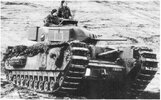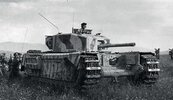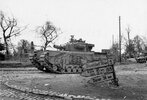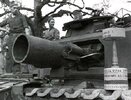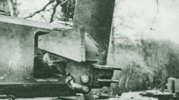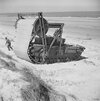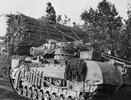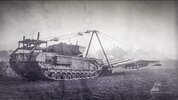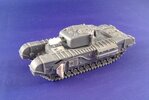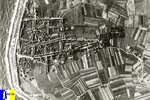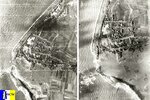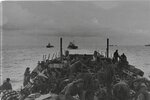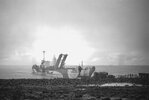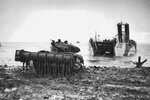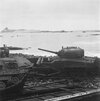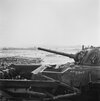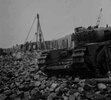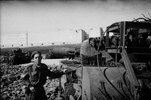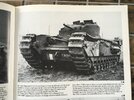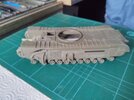- Joined
- Apr 28, 2018
- Messages
- 10,809
- Points
- 113
- First Name
- Jakko
My Grant CDL isn’t finished yet, and my JPK 120 isn’t either, but they’re both being painted — oh, and there’s that upcoming group build that’s getting in the way too because of my own fault, but I want to introduce the model I’ll be building next already  That will be this one I bought about two weeks ago:
That will be this one I bought about two weeks ago:
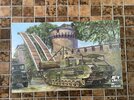
AFV Club’s Churchill Mk. IV Assault Vehicle, Royal Engineers with Small Box Girder Assault Bridge Mk. II — AVRE with SBG for short
This is a big box, larger in all dimensions than a typical tank kit, and it’s stuffed full of sprues, to the extent that I couldn’t get them all back in properly even after taking them out of their plastic bags … It’s also fairly pricey: I paid €79.50 for it, but given what you get for that, I think it’s good value for money anyway. So let’s take a look at that.
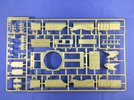
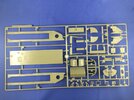
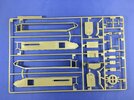
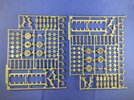
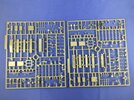
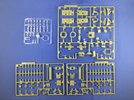
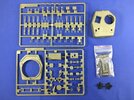
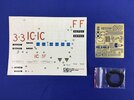
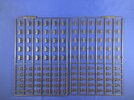
(I pictured only two of the track sprues, but you get four.) The tracks are the heavy cast steel, also known as BTS, type. AFV Club also sells the other common type, if you want that instead — or you could trade with someone who has another of their kits with that type, of course Oddly, you get two spare tracks in soft plastic of the other type of track.
Oddly, you get two spare tracks in soft plastic of the other type of track.
With all of this, you can build an AVRE (but not a regular Churchill, as it’s lacking the gun etc. for that). It’s basically what you also get in AFV Club’s other AVRE kits, though there are some differences depending on which exact one you buy. I noticed here that the turret shell has the ventilator dome on the left-hand side of the roof, while my previous one had it centred. The offset type is later.
But you also get this:
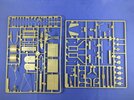
On the right is a sprue with the attachment lugs for the front of the tank and the winch for the engine deck, both of which are needed to carry the SBG. Add just those and you have how the tank would have looked right after laying its bridge; the winch would probably be removed soon after if the tank was to remain in action, but the lugs at the front would remain.
The sprue on the left has deep-wading gear, which is optional — would probably only need this for an AVRE in Normandy on D-Day or at Westkapelle on 1 November 1944. Or one on exercise in the UK, of course And you can use them for other types of Churchill too, so hopefully, AFV Club will also sell this sprue separately. The moulding of the deep-wading gear is pretty impressive:
And you can use them for other types of Churchill too, so hopefully, AFV Club will also sell this sprue separately. The moulding of the deep-wading gear is pretty impressive:
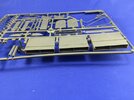
The stacks are slide-moulded hollow all the way through, and they’re something like 4 or 5 cm tall. The only thing that’s missing is the waterproofing canvas — but someone gave me a scan of the manual for that
As for the bridge, you get another four sprues, all like this one:
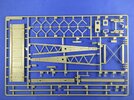
To give you an idea of size here: after removing these from their plastic bags, I put them into an A4-size ziplock bag to keep them safe, and with all four in, I had to be careful closing it because it was somewhat tight. The whole bridge was about 10 m long in real life, so that’s about 28 cm in scale.
 That will be this one I bought about two weeks ago:
That will be this one I bought about two weeks ago:
AFV Club’s Churchill Mk. IV Assault Vehicle, Royal Engineers with Small Box Girder Assault Bridge Mk. II — AVRE with SBG for short

This is a big box, larger in all dimensions than a typical tank kit, and it’s stuffed full of sprues, to the extent that I couldn’t get them all back in properly even after taking them out of their plastic bags … It’s also fairly pricey: I paid €79.50 for it, but given what you get for that, I think it’s good value for money anyway. So let’s take a look at that.









(I pictured only two of the track sprues, but you get four.) The tracks are the heavy cast steel, also known as BTS, type. AFV Club also sells the other common type, if you want that instead — or you could trade with someone who has another of their kits with that type, of course
 Oddly, you get two spare tracks in soft plastic of the other type of track.
Oddly, you get two spare tracks in soft plastic of the other type of track.With all of this, you can build an AVRE (but not a regular Churchill, as it’s lacking the gun etc. for that). It’s basically what you also get in AFV Club’s other AVRE kits, though there are some differences depending on which exact one you buy. I noticed here that the turret shell has the ventilator dome on the left-hand side of the roof, while my previous one had it centred. The offset type is later.
But you also get this:

On the right is a sprue with the attachment lugs for the front of the tank and the winch for the engine deck, both of which are needed to carry the SBG. Add just those and you have how the tank would have looked right after laying its bridge; the winch would probably be removed soon after if the tank was to remain in action, but the lugs at the front would remain.
The sprue on the left has deep-wading gear, which is optional — would probably only need this for an AVRE in Normandy on D-Day or at Westkapelle on 1 November 1944. Or one on exercise in the UK, of course
 And you can use them for other types of Churchill too, so hopefully, AFV Club will also sell this sprue separately. The moulding of the deep-wading gear is pretty impressive:
And you can use them for other types of Churchill too, so hopefully, AFV Club will also sell this sprue separately. The moulding of the deep-wading gear is pretty impressive:
The stacks are slide-moulded hollow all the way through, and they’re something like 4 or 5 cm tall. The only thing that’s missing is the waterproofing canvas — but someone gave me a scan of the manual for that

As for the bridge, you get another four sprues, all like this one:

To give you an idea of size here: after removing these from their plastic bags, I put them into an A4-size ziplock bag to keep them safe, and with all four in, I had to be careful closing it because it was somewhat tight. The whole bridge was about 10 m long in real life, so that’s about 28 cm in scale.
Last edited:


